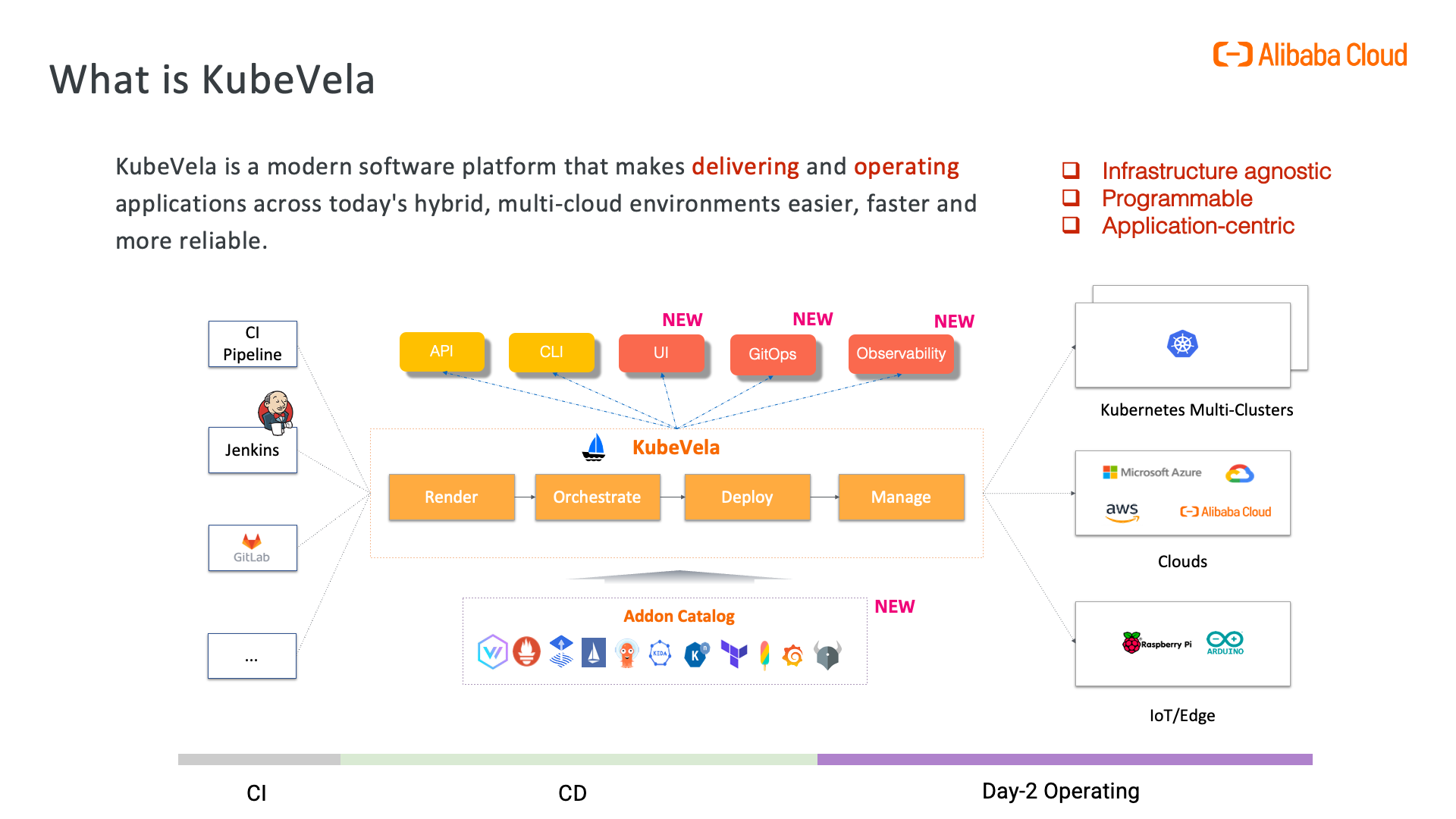Since Open Application Model invented in 2020, KubeVela has experienced tens of version changes and evolves advanced features towards modern application delivery. Recently, KubeVela has proposed to become a CNCF incubation project and delivered several public talks in the community. As a memorandum, this article will look back into the starting points and give a comprehensive introduction to the state of KubeVela in 2022.
What is KubeVela?
KubeVela is a modern software platform that makes delivering and operating applications across today's hybrid, multi-cloud environments easier, faster and more reliable. It has three main features:
- Infrastructure agnotic: KubeVela is able to deploy your cloud-native application into various destinations, such as Kubernetes multi-clusters, cloud provider runtimes (like Alibaba Cloud, AWS or Azure) and edge devices.
- Programmable: KubeVela has abstraction layers for modeling applications and delivery process. The abstraction layers allow users to use programmable ways to build higher level reusable modules for application delivery and integrate arbitrary third-party projects (like FluxCD, Crossplane, Istio, Prometheus) in the KubeVela system.
- Application-centric: There are rich tools and eco-systems designed around the KubeVela applications, which add extra capabilities for deliverying and operating the applications, including CLI, UI, GitOps, Observability, etc.
KubeVela cares the whole lifecycle of the applications, including both the Day-1 Delivery and the Day-2 Operating stages. It is able to connect with a wide range of Continuous Integration tools, like Jenkins or GitLab CI, and help users deliver and operate applications across hybrid environments.
